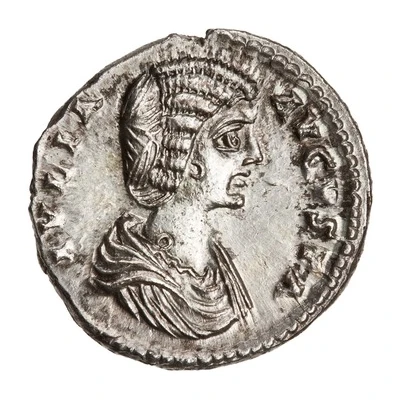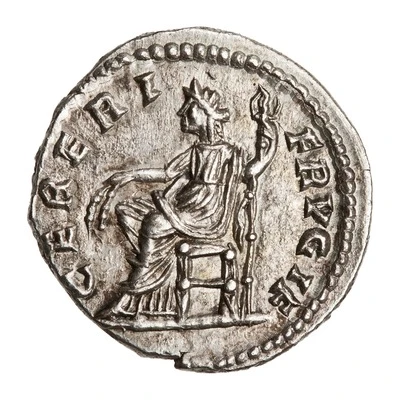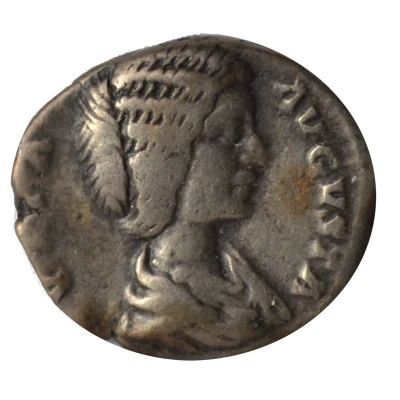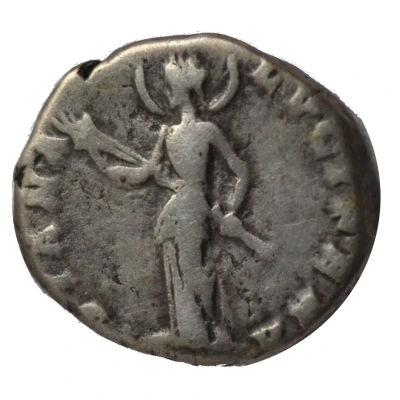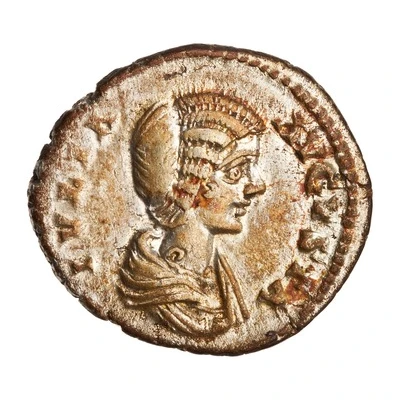


© American Numismatic Society (ANS)
Denarius - Julia Domna CONCORDIA; Concordia
| Silver | 3.2 g | 19 mm |
| Issuer | Rome › Roman Empire (27 BC - 395 AD) |
|---|---|
| Empress | Julia Domna (193-211) |
| Type | Standard circulation coin |
| Years | 196-202 |
| Value | 1 Denarius |
| Currency | Denarius, Reform of Augustus (27 BC – AD 215) |
| Composition | Silver |
| Weight | 3.2 g |
| Diameter | 19 mm |
| Shape | Round (irregular) |
| Technique | Hammered |
| Orientation | Variable alignment ↺ |
| Demonetized | Yes |
| Updated | 2024-10-05 |
| Numista | N#270022 |
|---|---|
| Rarity index | 90% |
Reverse
Concordia, draped, seated left, holding patera in extended right hand and double cornucopiae in left hand.
Script: Latin
Lettering: CONCORDIA
Translation: Harmony.
Comment
Mass varies: 2.58–3.803 g;Diameter varies: 18–20.5 mm;
Example of this type:
American Numismatic Society (ANS)
Source:
Online Coins of the Roman Empire (OCRE)
Interesting fact
The Denarius - Julia Domna (CONCORDIA; Concordia) coin was issued during the reign of Emperor Septimius Severus (193-211 AD), and it features an image of his wife, Julia Domna, on the obverse (front side). Julia Domna was a powerful and influential empress who played a significant role in Roman politics during her husband's reign. She was known for her intelligence, beauty, and her efforts to promote the cult of the Roman goddess Concordia, which is represented on the coin's reverse (back side) by the image of two women holding a patera (a ritual offering dish) and a scepter. The coin's design was meant to promote the idea of concordia, or harmony, between the Roman people and their rulers.
